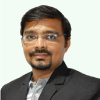Shift Change Notice Letter: Template, Format, and Sample

Table of Contents
In today’s quick-moving work environment, good communication is key to smooth operations, especially for HR professionals managing changes in shifts. A well-thought-out shift change notice letter can be crucial in how well your time-off request is respected and executed.
This blog post showcases how well-written shift change notice letters are created. This article will detail key points for inclusion in letters, how to break the news, and signs indicating your shift days are about to change. The timing for giving notice may differ depending on legal considerations such as location. As a best practice, it is essential to prioritize timely and legally compliant communication.
What is Shift Change?
Not all changes in shifts are created equal. Let’s break down the different types you might encounter:
Permanent Change
These are long-term dependent shifts, typically because of business needs that require enhanced services due to increased customer base demands.
Temporary Change
These refer to quickly made, short-term reassignments of workforces to work on specific projects to fill temporary business needs or manpower deficits. When done right, these should be good for your workforce. However, changing something temporarily makes it unpredictable regarding time or outcomes. It might be stressful if you are trying to implement a longer-term change.
Rotating Schedules
Allowing employees to cycle between shifts based on a fixed schedule. They are tailored to individual needs and have a typical length of one week or one month. Rotating can offer variety but lead to sleep pattern disruptions and uncertainty about time spent with friends and family.

Shift Change Notice Letter Sample
The specifics of your shift change notice letter will vary depending on the situation. Here are some examples to illustrate how to tailor the message:
Permanent Change in Shift Due to Business Needs
Subject: Important Notice: Permanent Change in Shift Effective [Date]
Dear Team,
This letter informs you of an upcoming permanent change in shift, effective [Date], due to [Brief explanation of business need, e.g., increased customer demand during specific hours].
Your current shift is [Current shift details]. Your new shift will be [New shift details].
We understand that adjusting to a new schedule can be challenging. We appreciate your understanding and flexibility during this transition and are committed to supporting you through this change. [Mention any additional support, e.g., training].
If you have any questions or concerns, please don’t hesitate to contact [Your Name] at [Contact information].
Temporary Shift Change for a Specific Project
Subject: Temporary Shift Adjustment for [Project Name]
Dear Team,
We will implement a temporary shift adjustment for the team to ensure optimal staffing for the upcoming [Project name] project. This adjustment will be effective from [Start date] to [End date].
[Details of temporary change of shift, e.g., specific days or times affected].
We appreciate your understanding and flexibility as we work together on this vital project.
Implementing a Rotating Schedule
Subject: Upcoming Implementation of Rotating Schedule
Dear Team,
We are excited to announce the implementation of a rotating schedule starting [Start date]. This schedule will allow for more even staffing coverage across all operating hours.
[Details of the rotating schedule, e.g., rotation length, how the schedule is determined].
We understand that rotating schedules can necessitate adjustments to personal routines. We are dedicated to supporting you in managing the transition.
Shift Change Notice Letter Format

Reasons Behind Shift Change
Business Challenges
Scheduling shifts may be necessary due to fluctuations in the number of customers at various times, adjustments to production schedules, and other market demands.
Staffing Modifications
Changes in personnel, including new employees, leaves of absence, or terminations, can necessitate both temporary and permanent changes to schedules to ensure proper staff management.
Operational Efficiency
Streamlining operations may involve combining shifts or establishing a rotating schedule. Maintain appropriate staffing levels for peak and non-peak hours with employees on-call as needed. It is crucial to consider the impact of changing working hours and shift swaps on your staff and their personal lives over time.
Work-Life Balance
Changes in schedules may disrupt their childcare, social activity, or overall well-being.
Health and Safety
Working on non-standard time shifts, especially at night, can disrupt sleep patterns and aggravate chronic fatigue. This disruption can ultimately lead to severe health and safety concerns for employees.
Morale and Motivation
Employees may feel dissatisfied and lose motivation during unforeseen or poorly communicated sudden changes.

Shift Change Notice Letter Template
An effective shift change notice letter provides clear guidance, outlining the new schedule and easing the transition. Here are the key elements to include:
Subject Line
Be clear and upfront. A subject line like “Important Notice: Upcoming Shift Change” immediately informs employees of the purpose.
Date of Notice
Document the date the letter is issued, setting a clear timeline.
Effective Date
Provide the specific date the new schedule goes into effect.
Old and New Shift Details
Clearly outline the current shift days and times, followed by the new schedule details.
Reason for the Change
Although not always a requirement, it is a good idea to provide a brief overview of the reasons that prompted the need to change (e.g., increased customer demand, shift in personnel, etc.). These professional insights help employees understand the context clearly. Also, avoid sharing any confidential information.
Contact Information
Indicate the contact details (e.g., email address, phone number) for employees who have any queries.
It is important to remember the importance of approaching concerns professionally and respectfully. Maintain flexibility, respect those affected by disruption, and ensure they know they’re valued.
Delivering the News With Empathy
A change in shift can leave some employees feeling thoroughly discouraged or unmotivated. Delivering it in a manner that ensures it does not spread negativity is crucial. Here are some tips for framing the announcement properly:
Focus on the Positive
Start your message by framing the reason for the change in the present terms that reflect a positive outcome. If business is picking up with increased cases, highlight a signal for business growth and opportunity.
Acknowledge the Disruption
Be upfront about the potential challenges associated with the change. Acknowledge the impact on work-life balance and routines.
Express Appreciation
Be sure to let your employees know how much you appreciate their understanding and flexibility. Transitioning to a new schedule will require time and effort.
Consider continuing to provide as much support as possible throughout the transition, including the following:
Training for New Shifts
If employees have unfamiliar shifts, provide necessary training or resources to ensure they feel confident in their new roles.
Open Communication Channels
Encourage open communication. Let employees know they can reach out with questions or concerns and be prepared to address them promptly.
Additional Tips for Effective Communication
Providing Advanced Notice
Instruct your team about changes in shifts to make the transfer smoother as early as possible. It gives team members more time to plan personal activities such as childcare and other outside commitments. Refer to specific local labor laws or regulations to see the minimal required notice provided for shift changes.
Utilizing Multiple Channels
Don’t rely solely on a written letter to communicate the change in shift. A multi-channel approach reinforces the message and ensures everyone receives the information. Consider using
Written Notice: Distribute a formal letter or email outlining the details of the change.
Meetings: Hold a team meeting to discuss the change in shift and answer any initial questions.
Individual Discussions: Schedule meetings for employees with specific concerns to address their questions directly.
Openness to Questions and Feedback
Effective communication is a two-way street. Encourage your employees to ask questions to keep a positive, open flow of information. Reaffirm your interest in these matters for their well-being and allow them to voice their concerns.
Address their concerns before jeopardizing the progress of anything else. Establish an atmosphere where team members can openly communicate with one another, and you can maintain a sense of collaboration and understanding throughout the transition phase.
Conclusion
Clear and respectful communication is the cornerstone of a successful change in shift. A considerate shift change notice letter, delivered with empathy, can have a big impact on employee morale and reduce the disruption to the team’s smooth operation.
Your team needs to know what to prepare for and be confident they have a place to set their questions and concerns. Be available to discuss. Encourage employees to ask questions, express concerns, and proactively assess their needs to support a positive and collaborative environment during this change.

Frequently Asked Questions
1. How Much Notice Should Be Given for a Shift Change?
The amount of notice can vary based on local labor laws and company policies. Generally, providing more notice than the legal minimum is advisable to allow employees ample time to adapt.
2. What Should Be Included in a Shift Change Notice Letter?
A shift change notice letter should include:
- Clear subject line
- Date of notice
- The effective date of change in shift
- Old and new shift details
- Reason for the change (if appropriate)
- Contact information for queries
3. How Should Employers Deliver News About Shift Changes?
News about changes in shifts should be delivered with empathy and clarity. Employers should focus on the reasons behind the change and acknowledge potential impacts on employees’ work-life balance.
4. Are There Legal Considerations for Implementing Shift Changes?
Legal considerations may include compliance with local labor laws regarding notice periods for shift changes. Employers should ensure they adhere to these regulations.
5. What if an Employee Requests Accommodations Due to the Shift Change?
Employers should consider reasonable accommodations based on the employee’s needs, ensuring fairness and compliance with company policies and legal requirements.

Modernize your HR tasks with factoHR today
Experience the digitalization of everyday business activities with factoHR's modern and compatible solutions for every need.

© 2026 Copyright factoHR


